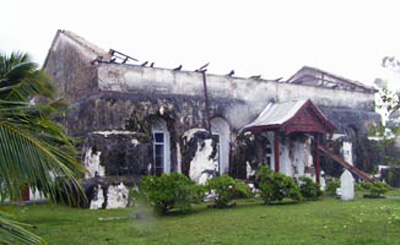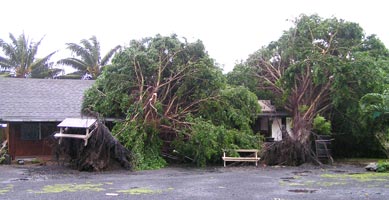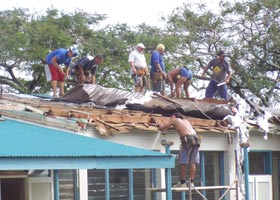CYCLONE NANCY
Nancy was the second cyclone in ten days and it brought winds estimated at up to 241 kms per hour (150 mph) which wreaked havoc across the Southern Group of islands. Clearing up was still going on after Cyclone Meena as it approached. And Cyclone Olaf was already strengenthing over the South Pacific


At Punanga Nui market on Rarotonga, two trees landed across the Moana Takeaway hut and a pareu hut
The CICC Church in Matavera lost its roof, as did the Seventh Day Adventist Church


With warnings about Cyclone Olaf on the way, repair work began quickly at Tereora College on Rarotonga
The main road in Avarua resembled a rubble-strewn river for days after the cyclone